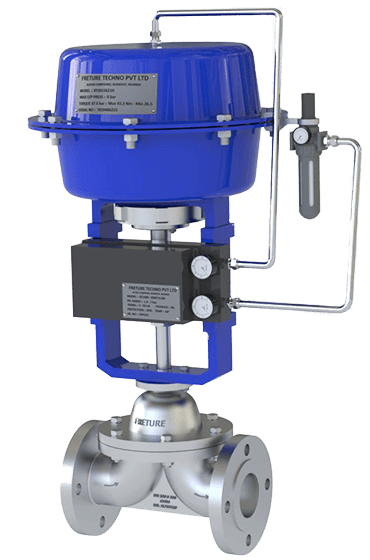Diaphragm valves are widely used in industries that require precise fluid control, but a common question arises: Is a diaphragm valve a control valve? The answer depends on the application and design of the valve. While diaphragm valves are primarily designed for on/off isolation, certain types are engineered for precise flow modulation, making them suitable for control valve applications. This article explores the role of diaphragm valves, their working principles, and their effectiveness as control valves in various industries.
Understanding Diaphragm Valves
A diaphragm valve is a type of valve that uses a flexible diaphragm to regulate or stop fluid flow. The diaphragm is pressed against a weir or a straight-through seat to control the passage of liquid or gas. The simplicity of its design makes it ideal for handling corrosive, abrasive, and high-purity fluids found in industries such as pharmaceuticals, water treatment, and food processing.
Diaphragm valves are available in manual, pneumatic, and electric actuation, allowing flexibility in operation. While many diaphragm valves are designed for on/off control, some models offer throttling capabilities, making them suitable for flow regulation.
Diaphragm Valves as Control Valves
A control valve is a device used to regulate fluid flow, pressure, or temperature in a system. Traditional control valves, such as globe valves and butterfly valves, offer precise modulation capabilities. However, diaphragm valves can also function as control valves in specific scenarios, particularly when handling slurries, viscous fluids, and high-purity applications.
The control capability of a diaphragm valve depends on factors such as:
Valve Design: Weir-type diaphragm valves offer better throttling control than straight-through types.
Diaphragm Material: Flexible diaphragms allow incremental adjustments to flow.
Actuation Mechanism: Pneumatic or electric actuators enhance control precision.
When equipped with a positioner, diaphragm valves can provide automated control, adjusting the diaphragm position to regulate flow based on system demands. This makes them effective in industries where sterile, contamination-free processing is crucial.
Advantages of Using Diaphragm Valves for Flow Control
Diaphragm valves offer several advantages when used as control valves, including:
Superior Sealing: Prevents leakage, making them ideal for high-purity applications.
Corrosion Resistance: Suitable for aggressive chemicals and harsh environments.
Minimal Dead Space: Reduces contamination risks in pharmaceutical and food industries.
Ease of Maintenance: Simple design allows for quick diaphragm replacement.
While diaphragm valves provide effective flow control in certain applications, they may not be as precise as traditional control valves like globe or needle valves in high-pressure systems.
Common Applications of Diaphragm Control Valves
Industries that require clean and precise flow regulation often utilize diaphragm control valves. Some key applications include:
Pharmaceutical Manufacturing: Controls ultra-pure water and chemical dosing.
Water Treatment Plants: Regulates flow in filtration and disinfection processes.
Food & Beverage Processing: Ensures hygienic flow control.
Chemical Processing: Handles aggressive acids and corrosive substances.
Conclusion
So, is a diaphragm valve a control valve? Yes, in certain applications. While primarily designed for isolation, diaphragm valves with actuated control mechanisms can regulate flow effectively, making them a viable option for process industries that demand precision, hygiene, and reliability. When selecting a diaphragm valve for control purposes, factors such as valve design, diaphragm material, and actuation type should be carefully considered to ensure optimal performance.

No comments:
Post a Comment